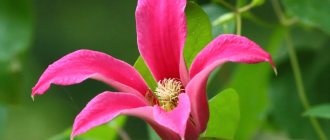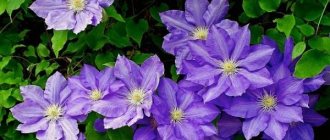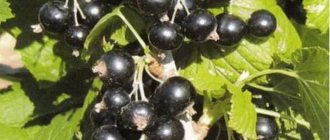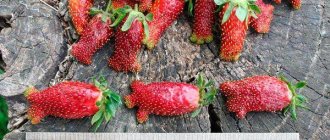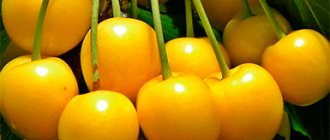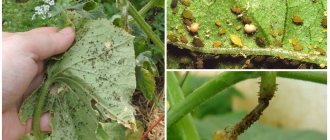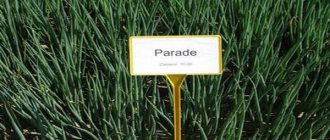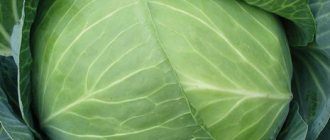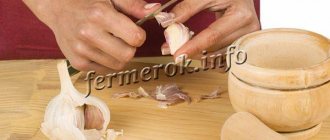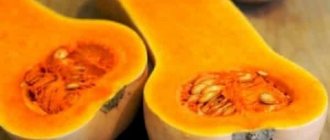Description of clematis Niobe
Clematis variety Niobe is a climbing vine that requires support to which it clings with leaf petioles and reaches a height of 2.5 - 3 m. The growth force of young shoots is moderate.
A large-flowered variety, the buds of which bloom from the second ten days of May to the third ten days of June. Second wave: from late June – early July and bloom until the end of September. Flowering occurs in two waves, on last year's and young shoots, without completely losing their bright color. Blooming, the buds of clematis Niobe acquire a black-burgundy color, gradually changing shades, becoming ruby red, with velvety shiny petals. The diameter of a blooming Niobe is 15 cm, the flower consists of 6-8 bright, pointed sepals, which are wide at the base and narrow towards the end. The stamens and pistils are bright yellow. Clematis variety Niobe begins to bloom profusely in the 3rd-4th year; in the first 2 years a small number of flowers appear.
The fruit is a multi-nut with numerous seeds, pinnately pubescent, of medium size.
The leaves are compound-trifolate, pointed, the edges are entire, dark green above, light green below with well-defined veins.
The root is strong, fibrous, penetrating deeply into the soil.
Frost resistance, drought resistance
Clematis Niobe is a frost-resistant variety that is suitable for growing in zones 3b, 4-11. The root system can withstand temperatures down to – 35°C, which makes it possible to grow in most of Russia, especially in the middle zone, and it is also possible to grow in Siberia.
Clematis variety Niobe is adapted to growing in dry areas, with more or less moist soil, but not in excess. It can do without watering for a long time, but in hot weather with strong winds, when the soil begins to crack, it requires moistening the soil.
Resistance to diseases and pests
Clematis Niobe does not differ from other varieties in its strong immunity to diseases and pests. It is also susceptible to fungal diseases, especially if the agricultural practices of planting and growing are violated.
Clematis is often susceptible to diseases:
- wilt (withering);
- rust;
- root rot;
- ascochyta blight (leaf spotting);
- gray rot;
- powdery mildew;
- Alternaria blight;
- mosaic;
- necrosis;
- cylindrosporiosis.
It is very important to follow the rules of care and cultivation for clematis Niobe, as well as to carry out preventive measures, spraying in spring and autumn with preparations with a fungicidal effect or spilling them on the soil. Diseased shoots must be immediately removed and burned to prevent re-infection.
Pests that most often appear on clematis varieties Niobe:
- aphid;
- mole cricket;
- small rodents;
- nematodes;
- butterflies and moths;
- spider mite;
- snails and slugs.
To eliminate parasites and insects, bait should be laid out on the site or repellent devices should be installed near the bushes. And also do not flood the soil around the clematis, make drainage grooves so that waterlogged soil does not attract pests. In spring and autumn, after spraying against diseases, treat clematis and the soil next to it with insecticidal preparations.
Diseases and pests
Infection with diseases and parasites is possible only if the rules of care and maintenance are violated:
Clematis niobe photo
- Rust. It can be identified by red or brown shapeless growths on leaves and stems. Infected areas darken, then die and crumble. Treatment is carried out using chemicals - first, the diseased areas are cut out, the crown is irrigated with Ridomil Gold, Skor or Hom.
- Powdery mildew. The causative agent is a fungus. Appears in damp and rainy weather. Looks like a white coating on foliage and shoots. Over time, it darkens and the diseased parts die off. First you need to cut out the infected areas, then irrigate the crown with chemicals - Bordeaux mixture or copper sulfate.
- Leaf chlorosis. This disease affects shrubs with a lack of iron in the soil. The situation can be corrected by feeding the vine with chelate preparations.
- Aphid. The insect multiplies rapidly and settles on the inside of leaves. It feeds on their juice, which leads to wrinkling, yellowing and shedding. At the initial stage of infection, you can do without chemicals - irrigate the crown with an infusion of tobacco, garlic or a solution based on laundry soap and ash. The advanced form is treated with pesticides - treated with Fitoverm or Karbofos.
- Caterpillars. They gnaw holes in the leaves, as a result of which the bush slows down its growth and loses its original decorative effect. Without timely treatment, only stems may remain on the bush. Treatment with insecticides is required - Actellik, Fitoverm.
- Nematode. A small insect damages the root system of a plant, as a result it ceases to receive moisture and nutrients. Necrosis of the aerial part develops. With such damage, it is impossible to save clematis, so it is dug up, burned, and the place of growth is spilled with a raspberry solution of potassium permanganate or copper sulfate.
- Spider mite. Appears in extreme heat and drought. Therefore, for prevention these days you need to spray the crown. The infected vine is treated with insecticides - Aktellik or Aktara.
To protect against diseases and pests, you need to buy healthy bushes and keep the area clean - promptly remove fallen leaves, remove weeds, regularly loosen the soil and trim off non-viable parts.
Planting and caring for clematis Niobe
The main rule for planting clematis variety Niobe: the root system should be in partial shade, shoots in the sun.
Recommended timing
Depending on the climate zone, clematis Niobe is planted in spring and autumn. For the Northern regions, planting is carried out in the spring, for the Southern regions in the fall. More favorable times for planting rhizomes: from mid-April to the end of May, from September to the first ten days of October.
Choosing a suitable location
Clematis Niobe grows well in areas facing south, southeast, southwest, in sun or partial shade. Clematis Niobe is planted in a place where there are no drafts, from buildings and fences at a distance of 1-2 m. The soil should be loose, well-drained, the soil should be sandy loam or loamy, the acidity level should be neutral.
Selection and preparation of planting material
Before planting clematis Niobe, you should choose a high-quality seedling without damage or dried roots, so it is better to purchase a specimen with a closed root system. Roots and shoots should be flexible, leaves bright green without damage, pests or diseases.
Before planting, the roots are soaked for 30 minutes in a disinfecting solution (manganese, phytosporin), the soil also needs to be spilled with it. Then inspect the roots and cut off any damaged or dry ones.
Landing algorithm
When planting clematis, Niobe must follow the following algorithm.
- After preparing the planting material, dig a hole 60-70 cm deep and 40-50 wide.
- Prepare a hole for planting, lay a drainage layer of stones and sand on the bottom.
- The excavated soil is mixed with rotted manure or grass, and peat, ash, and turf soil can be added.
- Prepare a future support for clematis and dig in a metal or wooden structure.
- Fertilized soil is laid on the drainage and a seedling is planted; warm water is watered on top, slightly moistening the soil.
- Sprinkle the remaining soil mixture on top.
Landing
Clematis are grown in gardens to decorate them, creating compositions according to the plans of landscape designers or the owners of the site themselves. Large plant sizes require adequate space, but if there is not very much of it, gardeners have to choose the planting site more carefully.
Choosing a place and time for landing
You need to choose a place to plant this plant, taking into account many of the nuances and characteristics of the plant:
- Clematis Niobe is a perennial plant; it can grow successfully in one place for about 30 years;
- the vine stems of clematis grow quickly and reach a height greater than human height in just one season;
- This plant is a light-loving plant; when shaded, flowering is short-lived and the size of the flowers is significantly reduced;
- the soil in the area where Niobe is supposed to be planted should be light and refined.
Young seedlings are planted in spring or autumn.
Selection of seedlings
The first rule when choosing clematis seedlings is to buy them only from nurseries that specialize in the production of ornamental climbing plants. Varieties and varieties of perennials should be selected taking into account the territorial capabilities of your garden. For a small area, clematis with lower stems are suitable. Also pay attention to the pruning group for varietal clematis.
In the video, a representative of the nursery where clematis planting material is prepared talks about the assortment available in their store (data from 2014):
Soil requirements
The soil structure for clematis Niobe should be loose and allow air and moisture to pass through well. Frequent watering compacts the soil, so it needs to be loosened, weeds removed, and mulched well in the spring with compost, tree bark or sawdust.
How to plant
Clematis Niobe, like all types of these plants, requires deep planting in the soil. The holes for planting are made quite deep (30-40 cm), plant seedlings should fit freely in them to a height of 10-15 cm above the root system. In order for the plant to begin to grow, and, therefore, to begin to bloom at an earlier date, they are first planted in separate containers; see how to do this correctly in the attached video.
Aftercare for clematis
Niobe can be grown by placing supports or leaving it to spread on the ground. The support can be a tree, a fence, pergolas, or a gazebo. Young vines should be tied to them using soft threads or ropes. The plant clings to the cuttings of the leaves, but may not hold tightly, which will damage the bush in a strong wind.
Watering
For the Niobe variety, moderate watering in the evening or morning is suitable throughout the spring-autumn period. Watering is carried out 1-2 times a week per 1 square. m. pour 8-10 liters. warm water. In dry weather, you need to increase the volume of water and the frequency of watering.
Top dressing
All clematis love rich soil, so they require fertilizer in spring and autumn, and the Niobe variety needs to be fed 3 times, adding fertilizer between flowering in July. In spring, fertilizers with nitrogen and potassium are needed, which will allow new shoots to grow quickly and flowers to set. In summer, complex fertilizers containing phosphorus, potassium, and nitrogen are applied. In autumn, the plant needs fertilizers with calcium, manganese, magnesium, phosphorus and nitrogen, or it can be fertilized with rotted organic matter.
Mulching and loosening the soil
In spring and autumn, to saturate the soil with micro and macroelements, the soil should be mulched with green manure, digging up shallow soil around the Niobe clematis. Loosening is carried out along with weed removal 3-4 times a month.
Features of flowering and application in landscape design
The flowering time of this clematis hybrid depends on the region of growth. The first buds in the middle zone appear on the plant in July, and the last ones delight the eye in September. In the southern regions, flowers can appear on clematis until late autumn.
Due to its compactness, the vine is used not only to decorate a personal plot - gazebos, arches, walls of buildings and fences.
Also, many clematis lovers grow it as a potted crop on balconies and loggias. If you plant a bush near a tree, in a few years the vine will completely entwine it.
Which pruning group does Clematis Niobe belong to?
Pruning group for clematis Niobe is the third, flowers are formed on new, young shoots. This variety has 2 waves of flowering, so the second group of pruning is also applicable for it. If you cover the vines for the winter, you don’t need to do any pruning; flowers will appear on last year’s shoots. The disadvantage of this method is that the roots will feed the old shoots more strongly, forming fewer new ones, making them weaker, which will affect the reduction in the formation of new flowers. Also, the bush will be very thickened, as a result of which fungal diseases may appear.
Pruning Clematis Niobe
To get early flowering in the spring, light pruning should be done in the first year, leaving 30-40 cm from the ground of healthy, undamaged shoots. In subsequent years, pruning is not carried out in the spring; it is carried out in the summer after the first flowering, cutting off faded shoots. In the fall, after flowering, shoots are cut off, leaving strong, undamaged shoots at a level of 1 m. Every 5-6 years, heavy pruning should be done.
Reviews
Elena, 33 years old, Perm
I planted two clematis seedlings, one of them is the Niobe variety. Its bushes grow up to the second floor of the dacha, blooming differently every year, sometimes almost none, sometimes all the vines have large flowers, maybe it depends on the weather, but I take care of them the same way.
Masha, 15 years old, Samara
Of all the flowers that my grandmother grows at the dacha, I like clematis with dark burgundy flowers, I don’t know what this variety is called, but they are wonderful and amazing.
Culture propagation
Reproduction mainly occurs in two ways:
- vegetative;
- using seeds.
The first method is more popular among gardeners. If the mother plant is more than 4 years old, then it can be divided. With such propagation, decorative properties are not lost. But if you collect seeds from a bush, the diameter of future flowers will be much smaller. Therefore, if you want to grow clematis from seeds, it is better to purchase planting material in a specialized store.
The vegetative method also involves propagation by cuttings. For this, both lignified and green shoots are used. The cuttings need to be treated with a growth enhancer and buried in containers with light, fertile soil. If the manipulation is carried out in the spring, then in the fall the plant can be planted in open ground. But be sure to cover it with peat, spruce branches and material for the winter. Do not use film under any circumstances, the plant will die.
